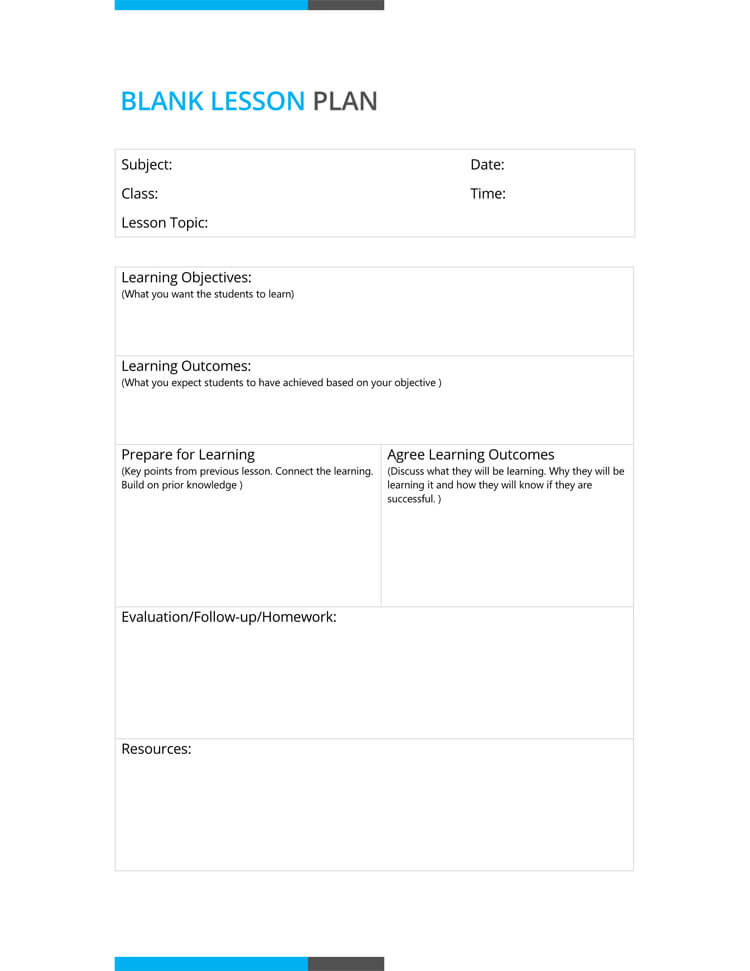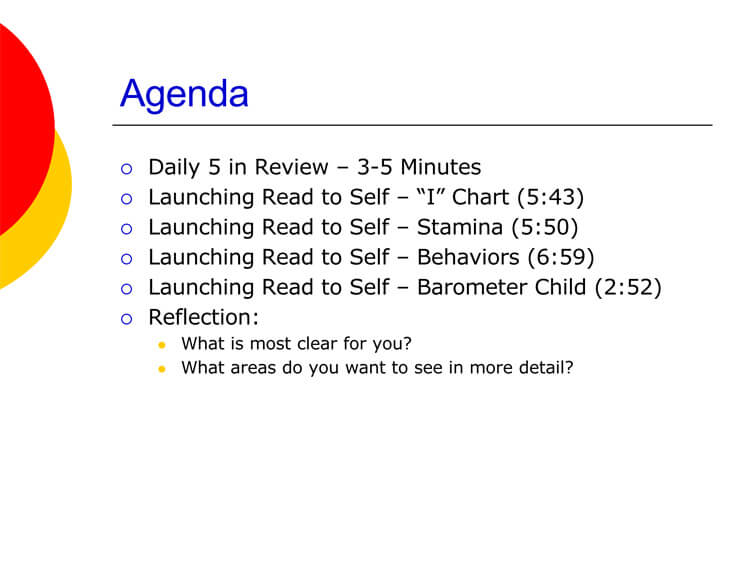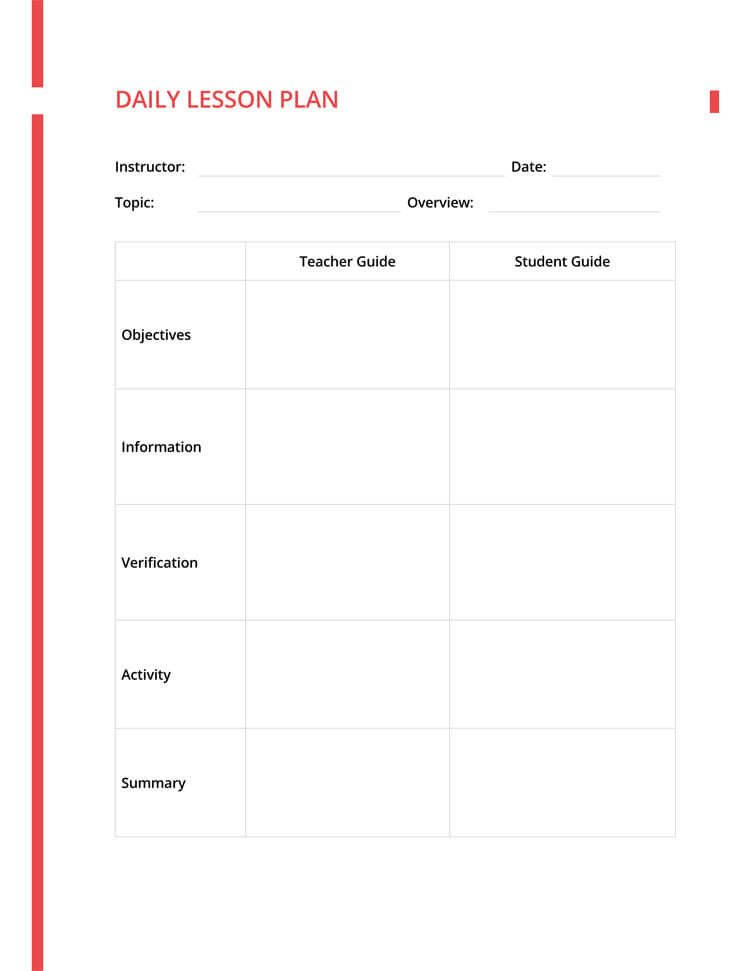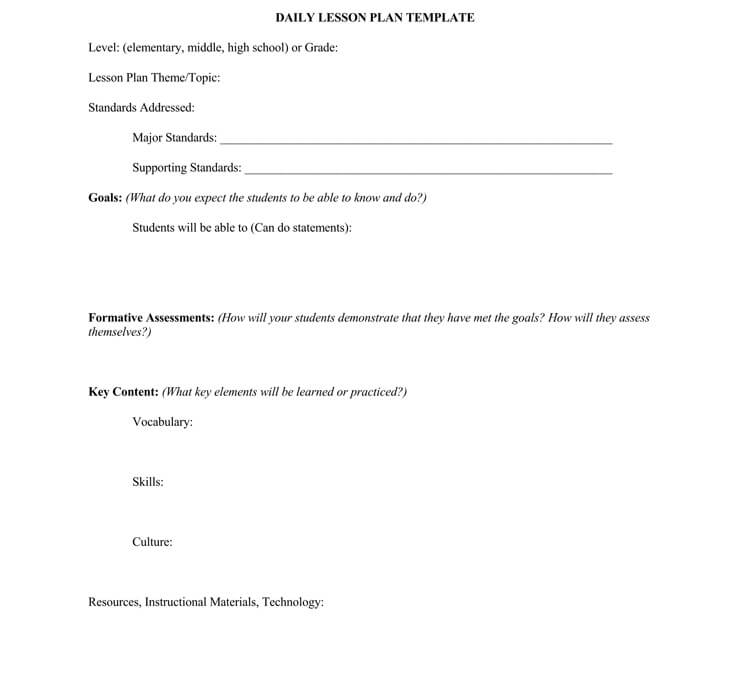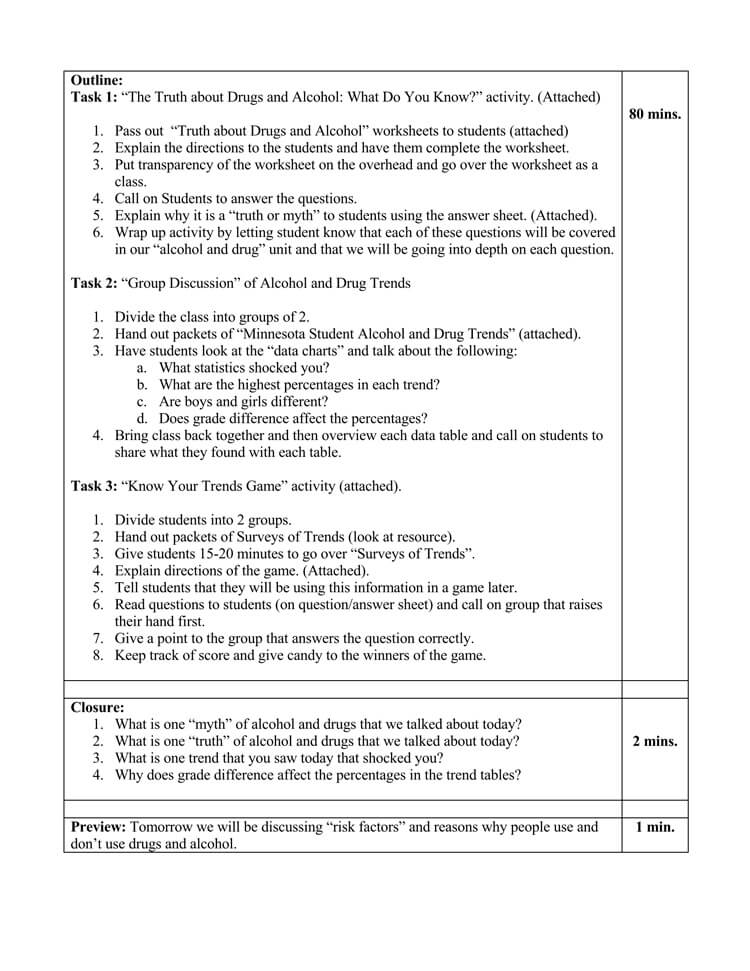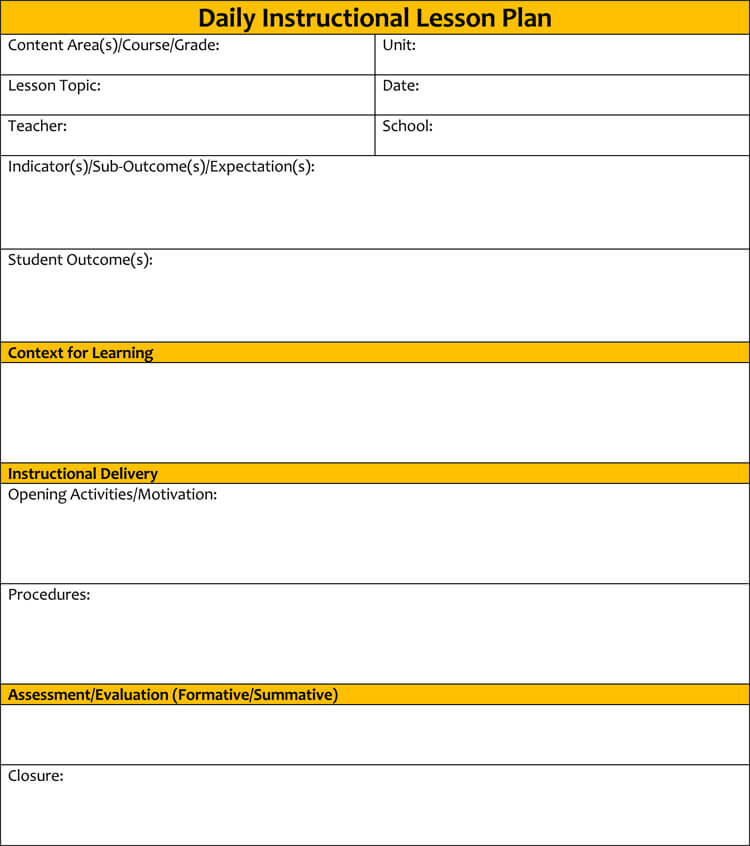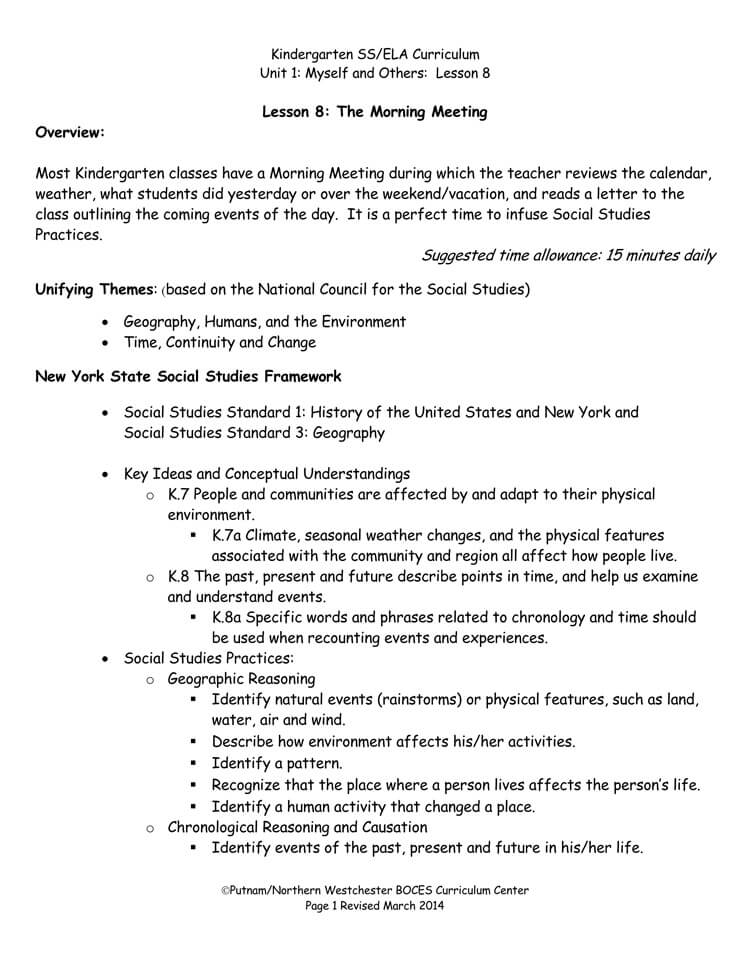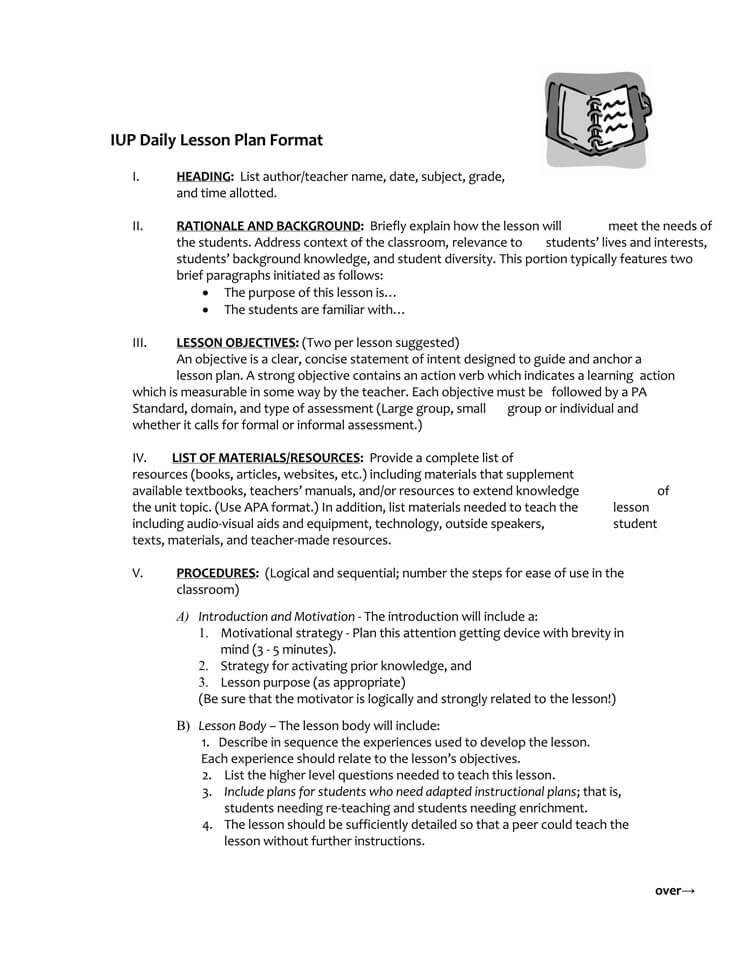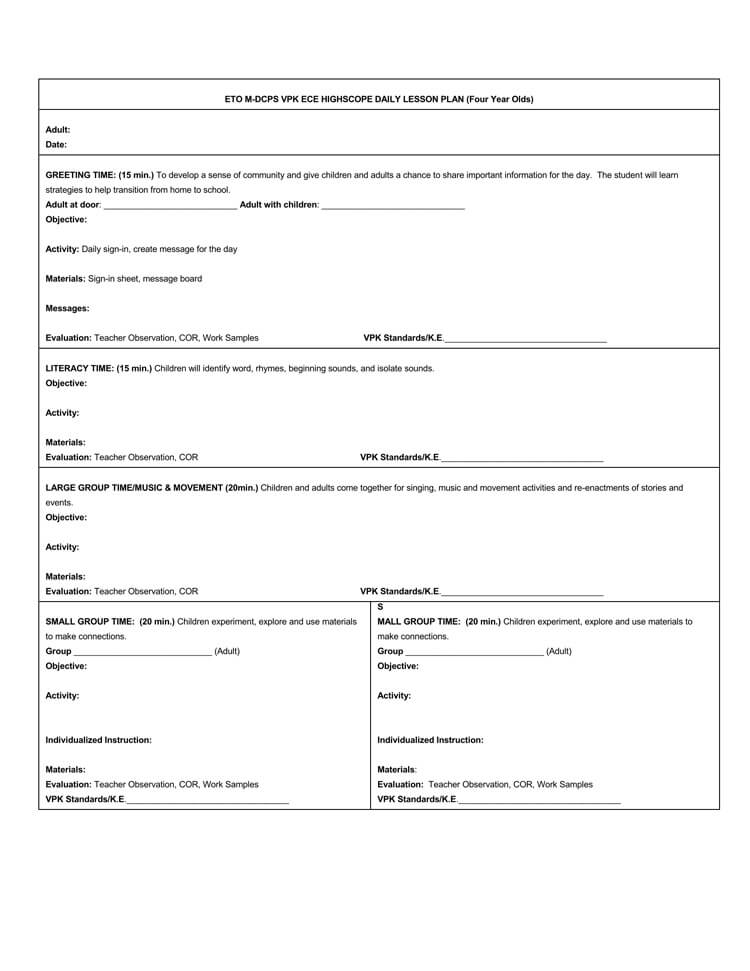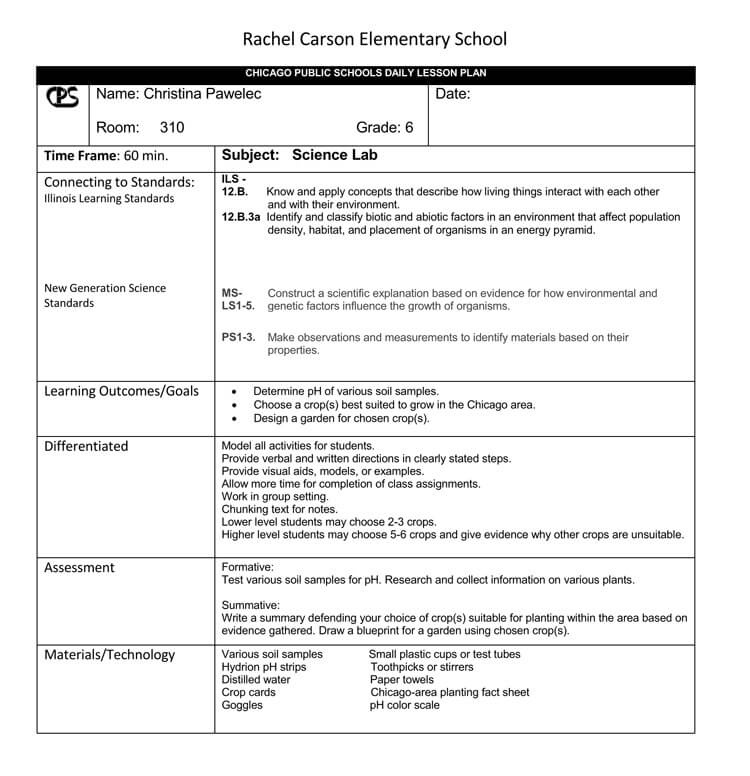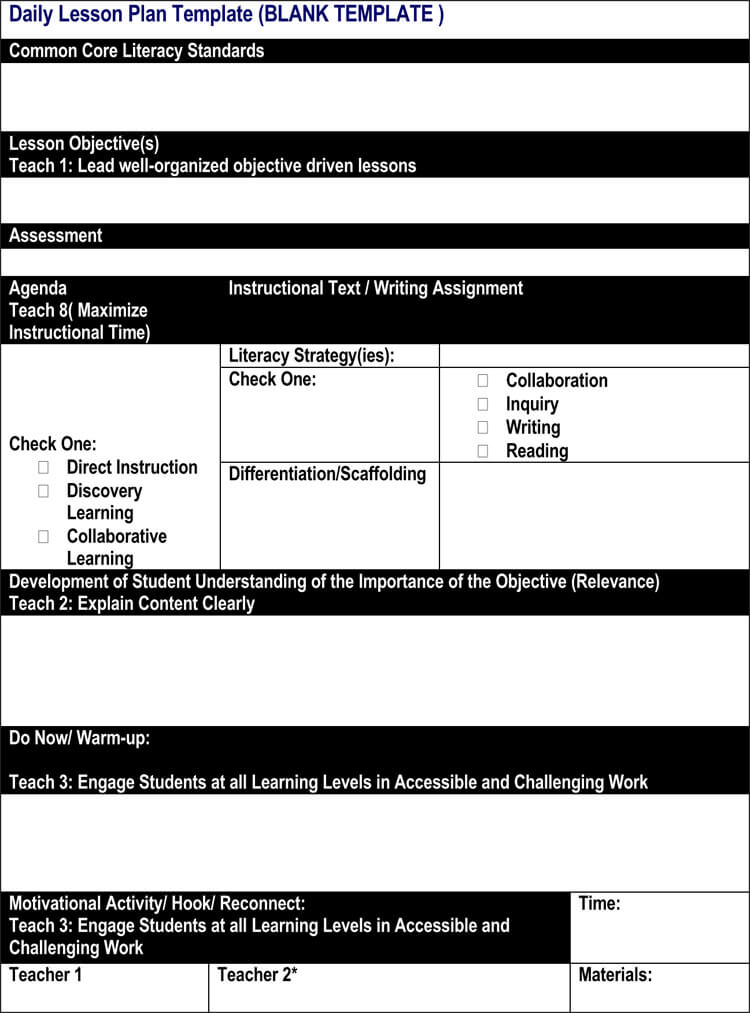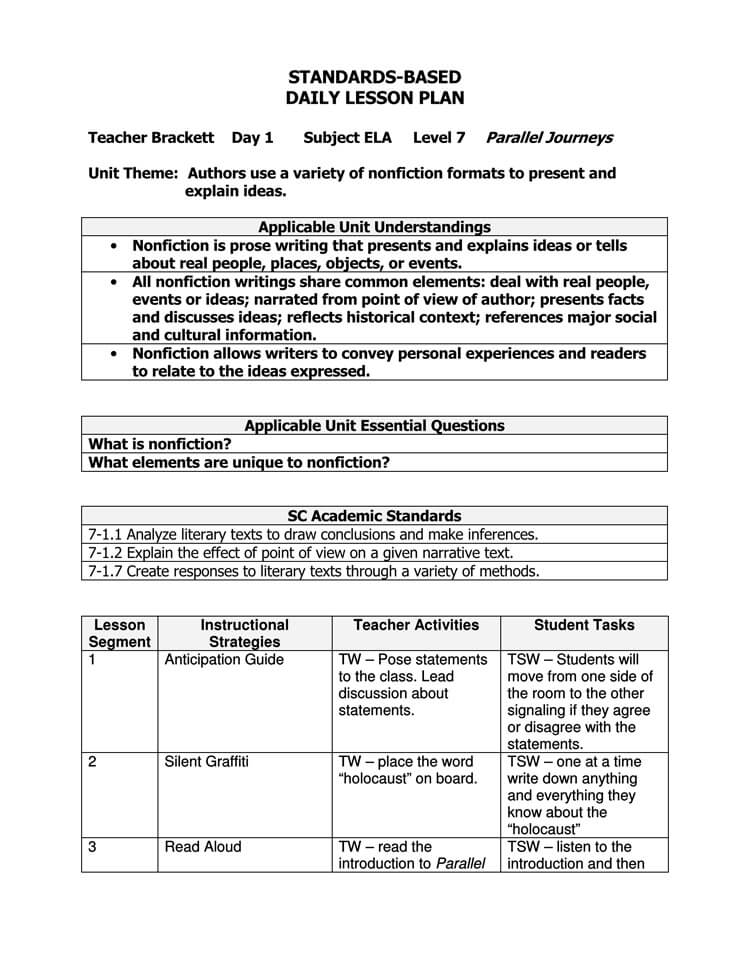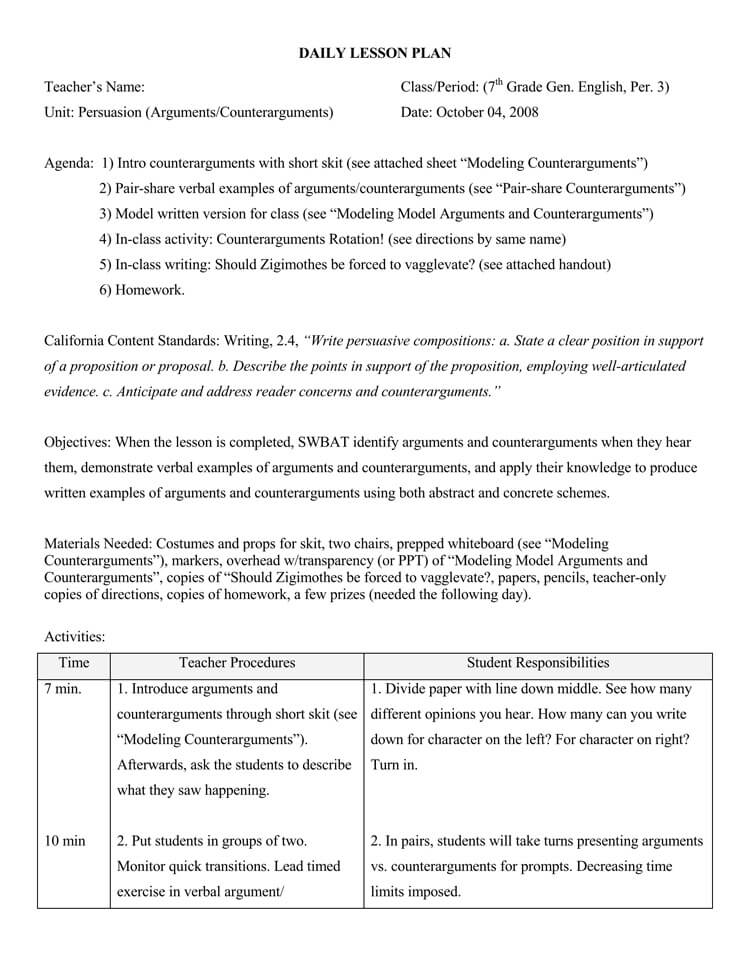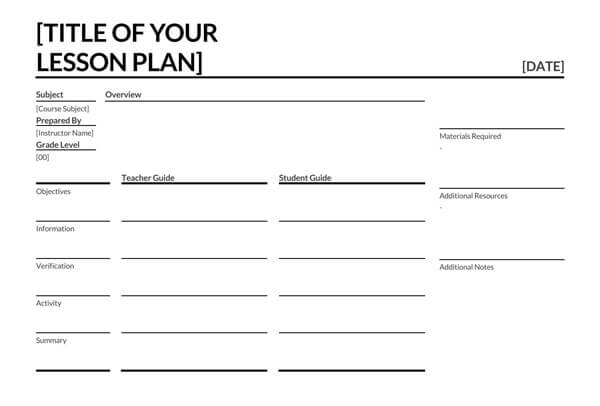A Daily Lesson Plan is a document used by a teacher or instructor as a step-by-step guide of what the students will learn, how effectively the teaching will be during class, and how best they will get feedback from the students.
This document lists the tasks that both the teacher and the students will indulge in during the teaching process.
They come in two formats, either printed or saved as a PDF. A lesson plan must be prepared in advance and can cover an activity, a whole lesson, a particular unit, a course, a whole school day, or even a whole school week.
Preparing a lesson plan in advance comes with benefits.
Here is a list of the importance of daily lesson planning:
- A teacher or instructor is able to hold an effective and engaging lesson with their students since they already have a roadmap of what the lesson would entail.
- Also, teachers can keep track of their learners from the feedback they get. With lesson planning, a teacher usually decides the most efficient way to gather feedback and this will help them record their students’ progress.
- Another great benefit is that teachers can achieve the teaching goals and learning objectives of a lesson since they have a guideline to follow and remind them of what is necessary for their learners.
- A teacher can also get a boost of confidence if they have a lesson plan as they already know what their target is; hence improving their students’ learning experience.
- Finally, a lesson plan enables the teaching process to be educational from both parties, that is, the teacher and their students, instead of being exhaustive as the teacher tries to juggle lots of content at once.
Free Templates
Since it is essential to have a daily lesson plan, a teacher or instructor should know how to create one. That means that finding the most effective, easy, and convenient way to create a daily lesson plan will help a teacher or instructor to have a proper daily lesson plan within no time. A teacher can use a daily lesson plan template to prepare their daily lesson plans. These templates are helpful and time-saving tools that make the lesson planning process easy and engaging. A daily lesson plan template will also ensure that the teacher has all the required information and details in their lesson plans.
Following are some free downloadable templates for you:
Five Components of a Lesson Plan
There are five main parts or components of a daily lesson plan that are fundamental and must be included in the lesson plan to make it effective and successful.
These five components are as follows:
Warm-up
The first section of the daily lesson plan should involve a recap of the previous lesson. The teacher or instructor can also go through the student’s homework and prepare them for the new content or material.
Introduction
The second section of the lesson plan should address the new material. This is the stage where the teacher should present the new material and the procedure they will use to teach the content.
Skill learning
This section of the lesson plan will highlight how the teacher will guide the students in learning and understanding the content.
Cool down
For this step, the whole idea is to allow the students to practice what they have learned from the lesson of the day. They can answer quizzes and exercises derived from the day’s content.
Reflection
For the last section of the lesson plan, the teacher should indicate how they will analyze the students’ understanding of the day’s content. Also, the teacher should outline the techniques they will use to ensure that all students are at par with the teaching goals and learning objectives.
While planning the daily lesson plan, a teacher should not forget to observe these five fundamentals of a lesson plan.
They can also ask themselves these questions as they write down their lesson plan:
- What are the needs of the students? (ranging from academic, emotional, social, personal to physical)
- What are the best teaching strategies to successful help the students’ learning experience?
- How should the student groupings be done and what size should each group be?
- When is the most appropriate time to have the lesson based on the material and its complexity?
- Which resources will be required during the lesson to make it successful?
- Was the lesson plan successful and if so, what did the students learn?
- If it was not successful, what can I do better to improve in the next lesson or build upon the completed lesson?
- Which objectives will be accomplished with the upcoming lesson plans?
Planning a Lesson
With the importance of having a lesson plan in mind, a teacher or instructor should know how best to plan a lesson.
Here is a guide that teachers or instructors can use to plan a lesson:
Learning objectives
Before planning the lesson, the teacher must first identify the lesson objectives they want to accomplish. That means information that the learner will have grasped and known after the lesson is over. Lesson objectives go beyond what the learner will be exposed to and focuses more on what they will understand.
Objectives should be written in simple and clear language for easier understanding by the students; this means that a teacher should avoid jargon. They should be achievable within a particular time frame and with the resources the teacher has. The objectives should also be set in a fair and equitable manner to provide students of all levels an equal chance of realizing them. They should be assessable to enable the teacher to measure the level of success after a completed lesson.
The objectives should also be closely related to the learning outcomes. A teacher can use Bloom’s Revised Taxonomy of Educational Objectives to set the lesson objectives.
Learning activities
After determining the learning objectives, the teacher can now prepare the activities and tasks that will help the student grasp the skills and knowledge intended from the lesson. It is best for a teacher to estimate the time they will spend on each objective and the expected feedback from the students if the objectives are met.
Learning activities examples might include slide presentations to explain the topic, tasks like multiple-choice questions to engage the students, and graphical representation to make the students understand the lesson better.
Here is what teachers should observe while preparing the learning activities:
- They should align with the set lesson objectives
- They should engage students in beneficial ways
- They should reveal their usefulness by being used for another purpose apart from the lesson time
- Assessment to check for student understanding
This may include random tests, surprise quizzes, and exams. These tools are used to assess the level of understanding by the students. It will help to track the students and plan for better ways to improve their understanding as the school year progresses. Feedback is the best way to know if the students are learning anything and assessing to gather such information.
Types of assessment tools that teachers can use to evaluate their students include: rubrics, group projects, progress reports, and portfolios
Procedures for delivering instructions
The first three steps are usually events that occur even before the lesson begins. When the lesson starts, the teacher must have distinct procedures for delivering their instructions. This may include using basic and simple language when teaching, repeating the important information, using the correct tone (warm), explaining the purpose of every task, and providing distinct examples for every step of teaching.
The teacher should have a proper organization of material to ensure they effectively communicate with the students. The best way is to gain the student’s information before reviewing the previous lesson and finally introducing the new content to them.
Student groupings
Student groupings involve either heterogeneous or homogenous division of students into groups for learning purposes. These small portions of students are easier to manage and keep track of.
Teachers should decide on the student groupings that work best for their students. A teacher can choose to group students of the same level together or students from different levels together. It will all depend on which groupings will work best for their students.
Materials needed to carry out the lesson plan
Materials need to carry out the lesson plan include visual aids, students’ handbooks, and textbooks. These resources should be determined prior to class to ensure that the teacher has all the materials that the students will need for a successful lesson.
Lesson feedback
The feedback section is important when planning for a lesson. Teachers should establish the ways they will use to gather feedback from their students once the lesson is over. This can be done by reflecting on the lesson and determining what went well and what needs change or improvement.
How the Daily Lesson Plan is Formatted
After lesson planning, it is important to format the daily lesson plan, and here is a guide on how to do so:
Highlight lesson objectives at the top of the lesson plan
When arranging the lesson plan, it is necessary to highlight the lesson objectives at the top. This is because the lesson objectives should guide the planning of the lesson.
Use the lesson plan to schedule each activity by the minute
With the chosen activities planned to make the lesson successful, it is best if a teacher schedules each activity by the minute. This way, a teacher does not rush through the content or run out of time when teaching.
Break the learning lesson plan into activities or subjects
For an effective lesson plan, format it in a way that it breakdowns the lesson into activities or subjects to ensure that one can effectively keep track of the lessons or subjects.
Color code the lesson plan for ease of use
Color coding the lesson plan is another excellent way of structuring the lesson plan to ensure ease of use. This is because color codes can help to highlight the teacher’s day plan according to time or importance, making the day less exhaustive.
Use illustrations to bring the lesson plan templates to life
Using illustrations will help to brighten the lesson plan and make the lesson that the instructor is about to teach more interesting and engaging. Colorful and playful illustrations on the lesson plan to the content of the day’s lesson are a great idea too
Use pops of color in lesson plans
Using color pops when laying out the lesson plan makes it interesting and engaging. Also, color pops help to highlight the different lessons the teacher has or the different subjects they need to teach each day.
Break the lesson plan into sections to make it easy to follow
After creating a lesson plan, the best way to format it is to break it down into sections that make the teaching and learning process effective. With these broken sections, the teacher is sure to cover the objectives, activities, use the materials and access the feedback.
Incorporate learning examples in lesson plans
Incorporating examples work best for art lessons. Examples are essential for lessons that require visual mediums during teaching. With examples already prepared in the lesson plan, that means, that a teacher can utilize their lesson time well by quickly retrieving these examples when teaching. For art lessons, the examples make the lesson exciting and interesting for the students.
Include notes sections in lesson plans
Having a note section in the lesson plan is best for reflecting purpose after lesson completion. This will give you a chance to assess the success of the lesson or lack of, before indulging in the next lesson plan.
Tips of Good Lesson Planning
Although making a lesson plan is not a difficult task, there are still a few tips; which if kept in mind during the process of planning it can bring effective results in the end.
Following are some effective tips for good lesson planning:
- Ensure that the lessons scheduled on the lesson plan are understandable and properly detailed to allow for a substitute teacher to fill in incase of an emergency.
- It is best to have two copies of the teacher lesson plan for every week. This will ensure that there is a lesson plan back at school for the principal whenever requested and one at home for further preparations for the lesson.
- For more confidence while teaching, it is a wise idea to script the lessons for better organization.
- When planning for the next week’s lessons, Thursday would be an appropriate day to start. It is a guarantee that by this day of the week, a teacher or instructor can have a good idea of the incomplete lessons, the objective yet to be achieved and any school activities that must be highlighted in the next school week. Also, this will help to avoid the laziness that comes with Friday after school.
- To make the lesson planning easier, try to have a template. Most teachers or instructors tend to have activities and timing that usually re-occur every week. Having a template for this makes lesson planning easier and faster. However, don’t make so many of these templates in case there is a major change in the school year.
- A good lesson plan should consider the needs of both groupings and individual students to ensure every student benefits.
- As a teacher or instructor, try to have information about when the principal will want to check on the lesson plan. This way, you will be at per with the needs of the school year and avoid last minute preparations.
Conclusion
Even with the stress and hassle of being a teacher, it is important to find time and create a lesson play. A teacher or instructor will survive their busy days and achieve their goal and objectives if they have a daily lesson plan. This document will help to break down their lesson, courses, units, or learning activities they want to indulge in with their students.
Also, it will help them have a record of the student’s learning progress and their own teaching process. It is, therefore, necessary to have a school lesson plan if a teacher or instructor wants to succeed in their teaching.
